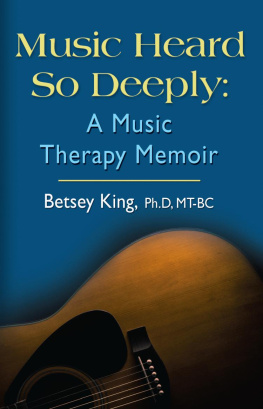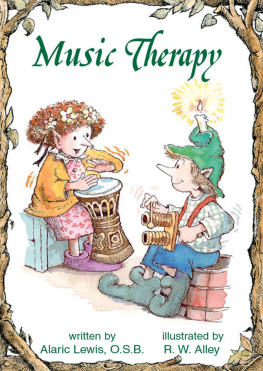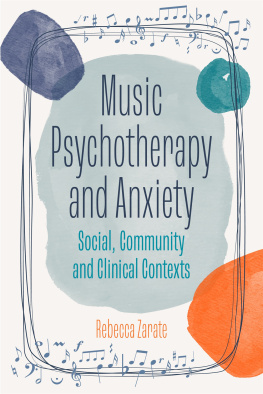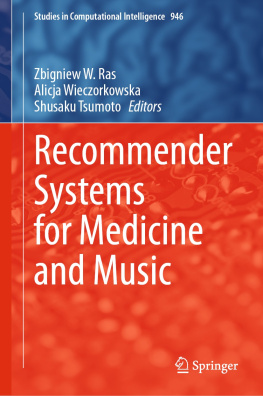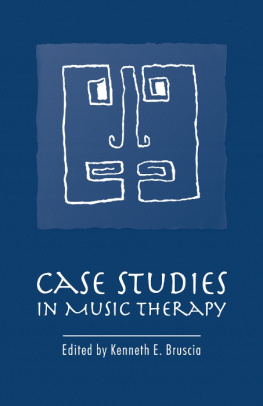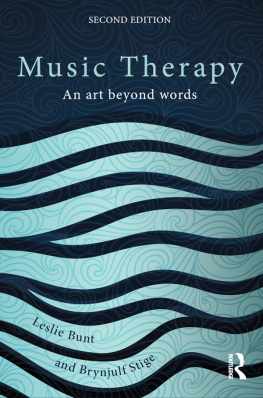CHAPTER ONE
Sam
Alzheimers disease and many forms of dementia are a tragedy for everyone involved. They rob people not just of their ability to remember and process their daily lives, they take their ability to communicate, plan, follow instructions, and control their emotions. They take away independence and put up barriers to the most important relationships. With an ever growing elderly population around the world, researchers and clinicians are fighting Alzheimers and dementia with research on pharmaceuticals, genetics, care plans, and therapeutic interventions.
For people with dementia or Alzheimers, music can sometimes seem like a miracle. Elders who cant recognize family members can recall and sing familiar songs, even play instruments. Anxiety can turn to joy in dancing. Drumming can stimulate interaction.
Recently, there has been a great deal of interest in the use of iPods with elders who have dementia or Alzheimers disease. These seniors, listening to personalized playlists, often show increased energy, attention, and interaction with others. This is what I would call therapeutic music it can be beneficial, but its not music therapy. The music involvement is limited to listening and there isnt a music therapist there to take a persons responses and build them into something more. This session from my clinical practice shows what happens when that personal therapeutic relationship does occur, and the music can change and evolve.
February
Rochester, New York
I hurried up the stairs of the Music House, the former residence that became offices for music department faculty at Nazareth College. I unlocked the door of my office and exchanged the bag of books and notes I brought from class for my regular tote. Into the oversized purse I threw a small notebook of songs, my tablet and a miniature speaker. My guitar was already in my car. I was off to see my only private client at his home -- a session which was one of the highlights of my week.
Most of the therapy I have a chance to do as an associate professor occurs at our colleges on-campus clinic, a training ground for our students. In 2012, however, I met a woman who was advocating for persons with Alzheimers disease and she asked me to assess her husband, Sam, who had been diagnosed several years earlier. Once I had completed the assessment and it was clear he would benefit from music therapy, I agreed to stay on as his therapist. It wasnt that I had extra time to fill (any professor knows how ridiculous that is) but we were beginning to focus on Alzheimers research at our college, and Sams response to music was profound and joyful. It was also evident that Sam was responsive to my style of therapy.
Every music therapist has his or her own style. This is inevitable: we are musicians and we work in a profession for which relationship is a key component. If every MT-BC (board-certified music therapist) presented a song in exactly the same way, we would be no different than a recording. And while there are researched therapeutic techniques we learn and use, we relate to our clients as ourselves. Some music therapists are naturally quiet and gentle; they may lean towards work that benefits from those characteristics then make the extra effort to be more energetic when clients need that. Some music therapists find they do their best work within the structure of protocols: behavioral plans or medical procedures that need to remain consistently presented and require specific, often complex sets of cues.
My strengths as a therapist come from energy and humor. I can work in other styles, and do, but I work especially well with clients who respond to smiles and laughter and broad gestures. I have learned over the years how to present information slowly but enthusiastically and this works well with clients who have both cognitive challenges and the need to maintain focus and alertness. Sam was such a client and from our first assessment session, his wife, his aide and I all noticed that he was delighted to sing with a musician who had a bit of sass. He responded in kind, showing parts of his personality that had been missing in action, and I decided I should stay on as his therapist and fit his session into an already crazy schedule. It wasnt a sacrifice. I enjoyed each session as much as he did.
***
Mr. G! I exclaimed as did each time I entered the large living area where Sam sat in his favorite chair, Ive brought the music! Sam put down the paper he had been holding (but was unable to read) and said Ok. It was an automatic response; he wasnt able to anticipate my arrival or remember my name. I pulled up a chair in front of him and, as quickly as I could, got my guitar out of its case, speaking as few words as possible so that our first significant communication would be musical. I loved my old, worn guitar for one particular feature: it stayed in tune. This meant that I could almost always begin a session quickly, even if I had no time to set up.
Sam was sitting quietly, not completely sure what was about to happen. I strummed a single chord and, making sure Sam and I were looking at each other, began singing the Jones and Kahn song with which I almost always started.
It had to be.

